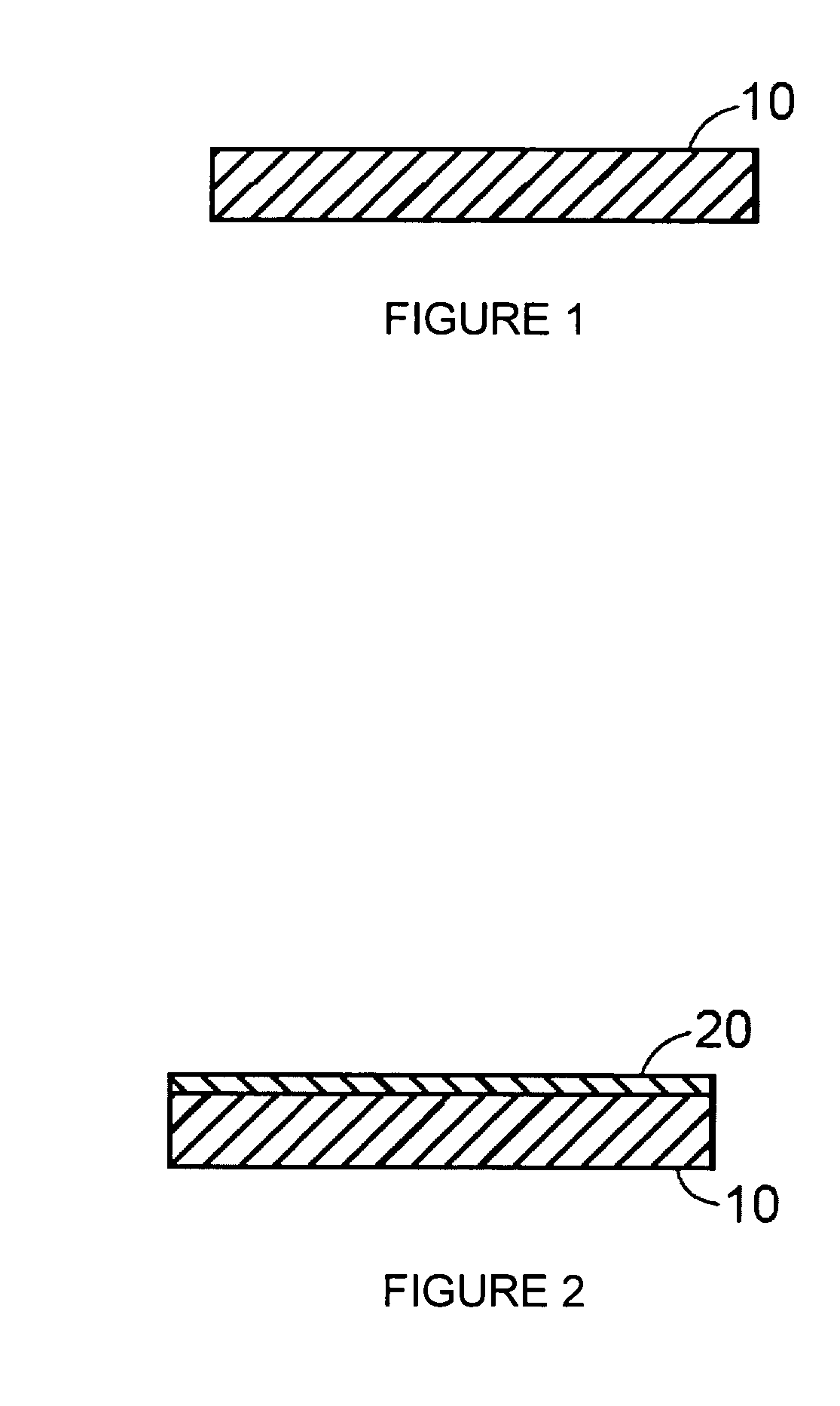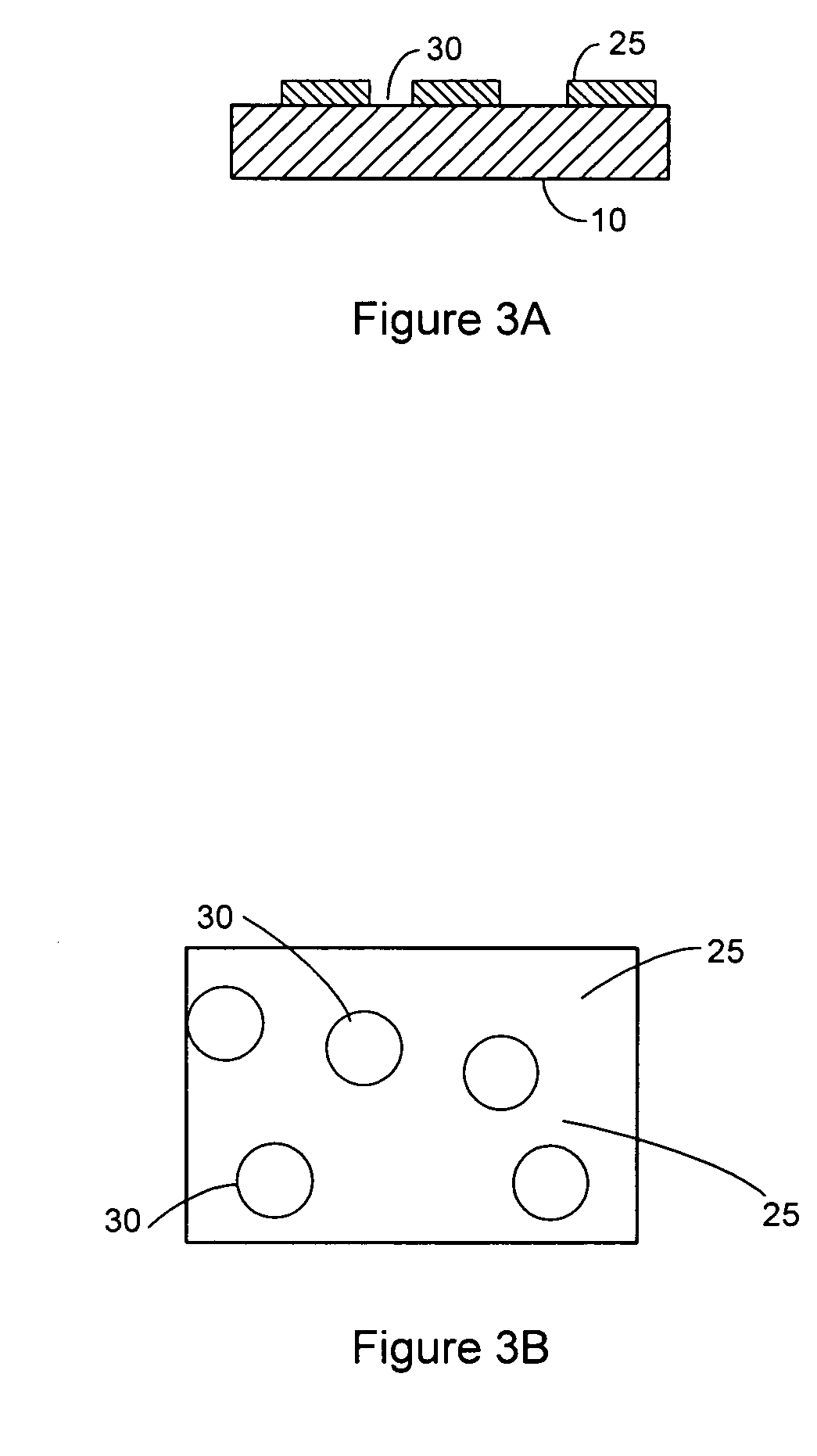Threading-dislocation-free nanoheteroepitaxy of Ge on Si using self-directed touch-down of Ge through a thin SiO2 layer
a nano-heteroepitaxy and sio2 layer technology, applied in the direction of crystal growth process, polycrystalline material growth, chemically reactive gas growth, etc., can solve the problems of degrading semiconductor device performance and impracticality of using the heteroepitaxy layer
- Summary
- Abstract
- Description
- Claims
- Application Information
AI Technical Summary
Benefits of technology
Problems solved by technology
Method used
Image
Examples
example 1
[0032]Samples I was undoped Si(100) including an interface layer of SiO2. Sample II was undoped Si(100) stripped of an interface layer by exposure to HF.
[0033]Both sample substrates were first treated to remove contaminates by immersion in a Piranha solution for about 5 minutes to form a thin layer of SiO2 on the substrate. The Piranha solution was prepared by mixing 4 volumetric parts of 2M H2SO4 with 1 volumetric part of 30 wt % H2O2. The samples were then treated for 5 minutes in an HF solution to remove the SiO2 layer. The HF solution was prepared by diluting a 49 wt % electronics grade HF solution to 11 wt % by deionized H2O. The Piranha-HF treatments were repeated three times.
[0034]A fresh Piranha solution was prepared and Sample I was treated at 80° for 10 minutes to form a thin layer of chemical oxide. After treatment, Sample I was rinsed with deionized H2O, and blow-dried with N2. No chemical oxide layer was formed on Sample II.
[0035]Sample I was then immediately loaded int...
PUM
| Property | Measurement | Unit |
|---|---|---|
| width | aaaaa | aaaaa |
| thickness | aaaaa | aaaaa |
| temperatures | aaaaa | aaaaa |
Abstract
Description
Claims
Application Information
 Login to View More
Login to View More - R&D
- Intellectual Property
- Life Sciences
- Materials
- Tech Scout
- Unparalleled Data Quality
- Higher Quality Content
- 60% Fewer Hallucinations
Browse by: Latest US Patents, China's latest patents, Technical Efficacy Thesaurus, Application Domain, Technology Topic, Popular Technical Reports.
© 2025 PatSnap. All rights reserved.Legal|Privacy policy|Modern Slavery Act Transparency Statement|Sitemap|About US| Contact US: help@patsnap.com



